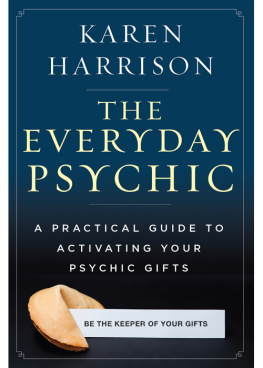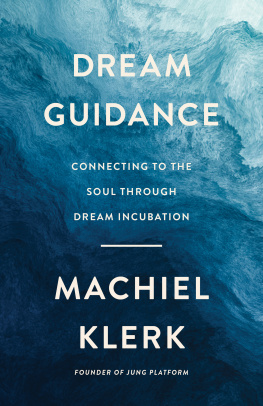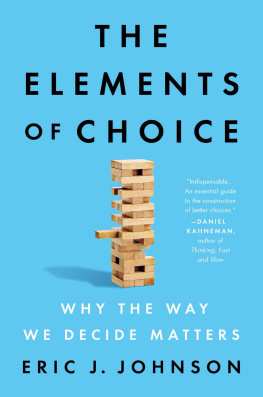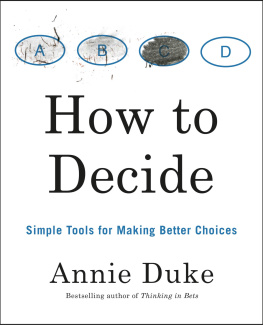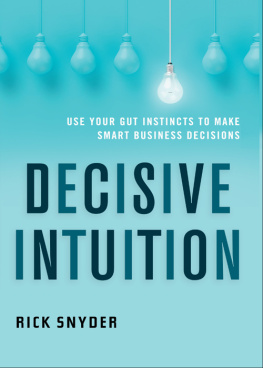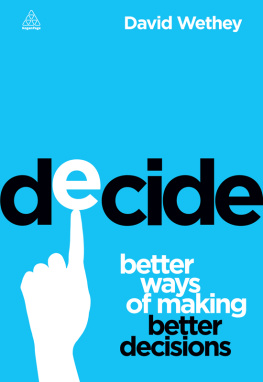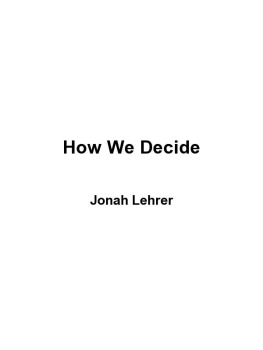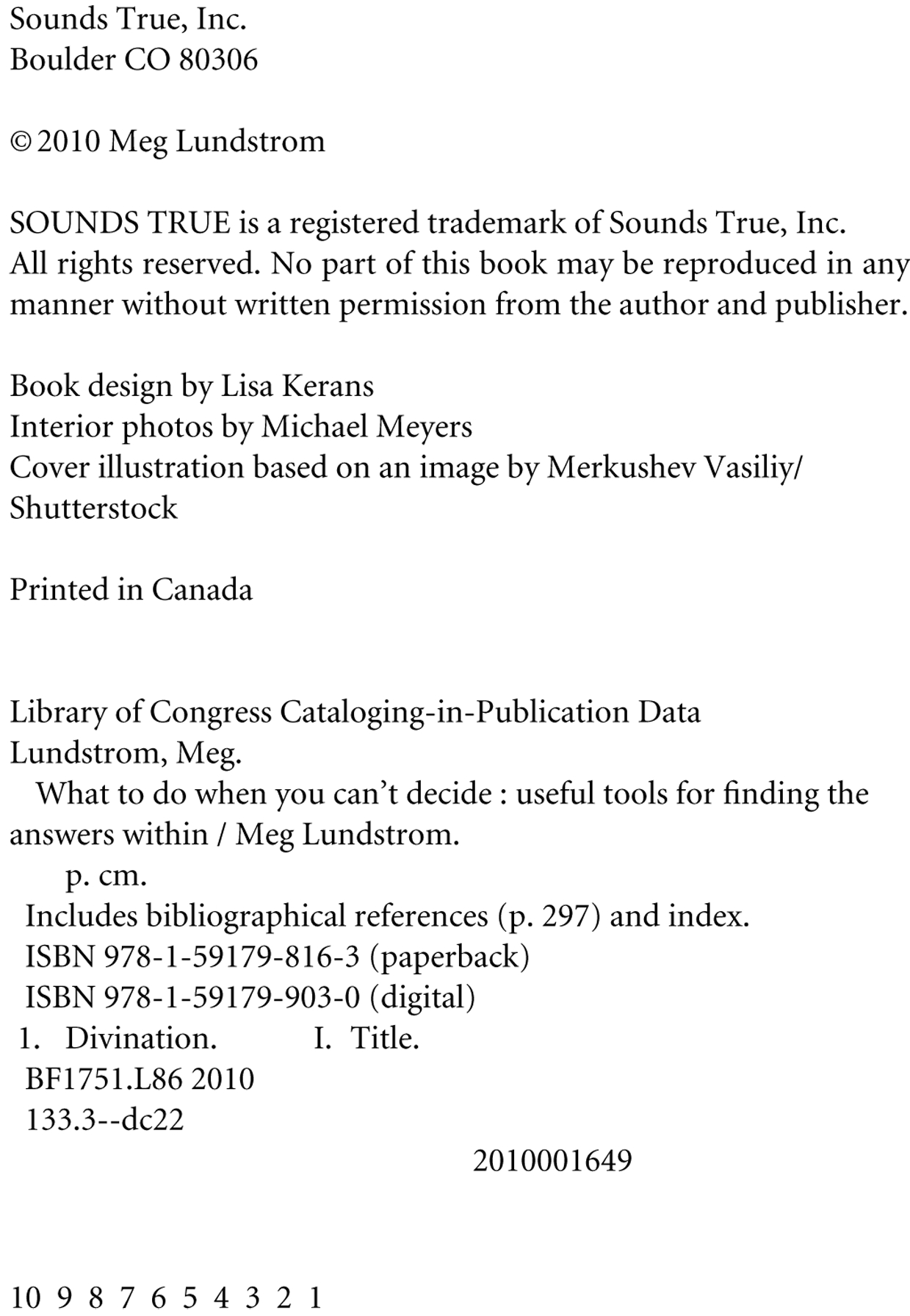Figure 1: Circuit fingers.
Figure 3: Testing position.
INTRODUCTION
What should I do?
Is this good for me or not?
Which one do you recommend?
How do I get out of this fix?
Should I keep going in this direction?
Is there a better way for me to do this?
***
When we have pressing questions and dont know which way to turn, we naturally ask them of someone in the knowour parents, our friends and teachers, or experts such as doctors, lawyers, and financial advisors. Depending on their expertise and insight, the outcome might work outor not.
But in just this way, we can tap a deeper, wiser source. We can ask simple, direct questions of that underlying essence of life, love, and wisdom that is called by many names: God, our higher self, higher consciousness, Pervasive Unity, Presence, the superconscious, the Universe. By using a simple, convenient physical objectsuch as our fingers, a pendulum, or folded pieces of paperwe can get a clear-cut Yes/No answer. Astonishingly, the response turns out to be just what we need. It weighs factors we have no conscious knowledge of, bypasses unanticipated obstacles, and fast-forwards us on the path to greater clarity and love.
Historically, this process is known as divination. The word comes from the Latin divinus, meaning belonging to or relating to a deityand when divining is done with care and reverence, it leads us ever more deeply into our innate divinity. (In this book, the word divining is used. Divination implies a system, whereas divining speaks to the dynamic, unfolding, in-the-moment, collaborative nature of asking for and receiving guidance.)
Divining can be used in matters large and smallchoosing a dentist or a destination, selling a house or an idea, devising a job shift or a shopping list, diving into our limiting beliefs or a new relationship.
As practical as divining is for even mundane decisions, at its heart it is a spiritual processspiritual as opposed to material, in the sense that something is happening that cant be explained by your five senses. How is it that when you ask the question, the right answer comes? Where does the answer come from? There are many explanations, all of them a matter of belief. What is wonderful, however, is that divining requires no particular belief for it to work, just the ability to take a deep breath and jump in. The results will be in the immediate feedback you getthe appointments that fall flawlessly into place, the turn in the road that saves you from a traffic jam, the job or house that turns out to be exactly what you need.
It is also spiritual in the way that it leads you directly into your own profound depths. Divining helps you open up to the latent wisdom within yourself. It is through your own firing neurons, through your own muscular system, through the immense panorama of your own unconscious, that the answers arrive. Although there are some useful guidelines, the process is customized by you, and through it you will find yourself experiencing not only the vast potential of life, but the responsiveness of the Universe. The Divinehowever you conceive of itis waiting to give you what you need, and these tools are simple means to figure out what that is.
WHAT YOULL FIND HERE
This book differs from other books on divining because it focuses on three simple, direct tools for making a decision: muscle-testing, or kinesiology, which uses muscle strength in your fingers as a marker; pendling, or asking questions using a pendulum; and the chits, a randomized casting of lots that uses folded pieces of paper. These are systems of inner guidance that give you Yes/No answers without much story or interpretation; in fact, youll have a hard time not understanding the answer. These methods differ from the I Ching and Tarot, for example, which are symbolic systems based on metaphor and open to wide interpretation.
Also, the three tools in this book lend themselves to use on mundane as well as weighty questions. They are portable. They are so direct that the biggest challenge may well be not how to use them, but how not to overuse them.
If youve never divined before, this book lays out the landscape so you can choose what works for you and attain precise, useful results in a short time. If youve dipped into divining now and thenmaybe you have a pendulum sitting in a drawer somewhereyoull learn systematically how to improve your results so that you move fully and exuberantly through the world, even when the going gets tough. And if youre already accomplished at divining, the creativity of divining experts interviewed for this book may inspire you to try new approaches and lines of questioning.
The emphasis in this book is on decision-making in the moment. It is not on fortune-telling. Here is the difference: I might ask what is the best day to take a trip to Chicago or what flight is the best one to take there; however, I wont ask if Ill meet a business opportunity on that flight. Making decisions opens doors; fortune-telling subtly closes them. More often than not, attempting to peer into the future produces wrong or erratic resultsbecause it is often not in our best and highest interest to know what is coming around the bend, as much as the managing mind may want advance notice.
This book is about decision-making for you alone, not for others. Youll learn as you work with these tools about your own blocks and hidden assumptions, and gentle guidance will come your way over time to move past them. But performing muscle-testing, pendulum-dowsing, or chit-tossing for others entails major karmic responsibility and should not be undertaken until you, first of all, have your own practice well in hand, and second, get further training from experts who will help you identify any blockages. Youll find suggestions in this book on how to get that additional training.
In part 1, youll learn about the benefits, history, and science of the divining tools taught in this book. Youll see how divining is a play of consciousness that you can shape to fit your own needs.
In part 2, youll first find step-by-step instructions for muscle-testing and pendling, tools that share many features in their application and lend themselves to on-the-spot responses. Youll learn not just the mechanics, but the all-important procedures for entering a receptive inner state, getting yourself out of the way, asking the question clearly, and assessing the result. Youll see how you can hone in on information and, in the advanced chapters, youll learn how to expand the range and depth of the simple Yes/No response through creative lines of questioning and dialoguing. In chapter 10 you will read about the chits, which require little skill-building and are useful for weightier, emotion-prone questions. A walk-through of some supplementary approaches is also included should you want to delve deeper into the underlying dynamics, the whys and wherefores, of a situation.


